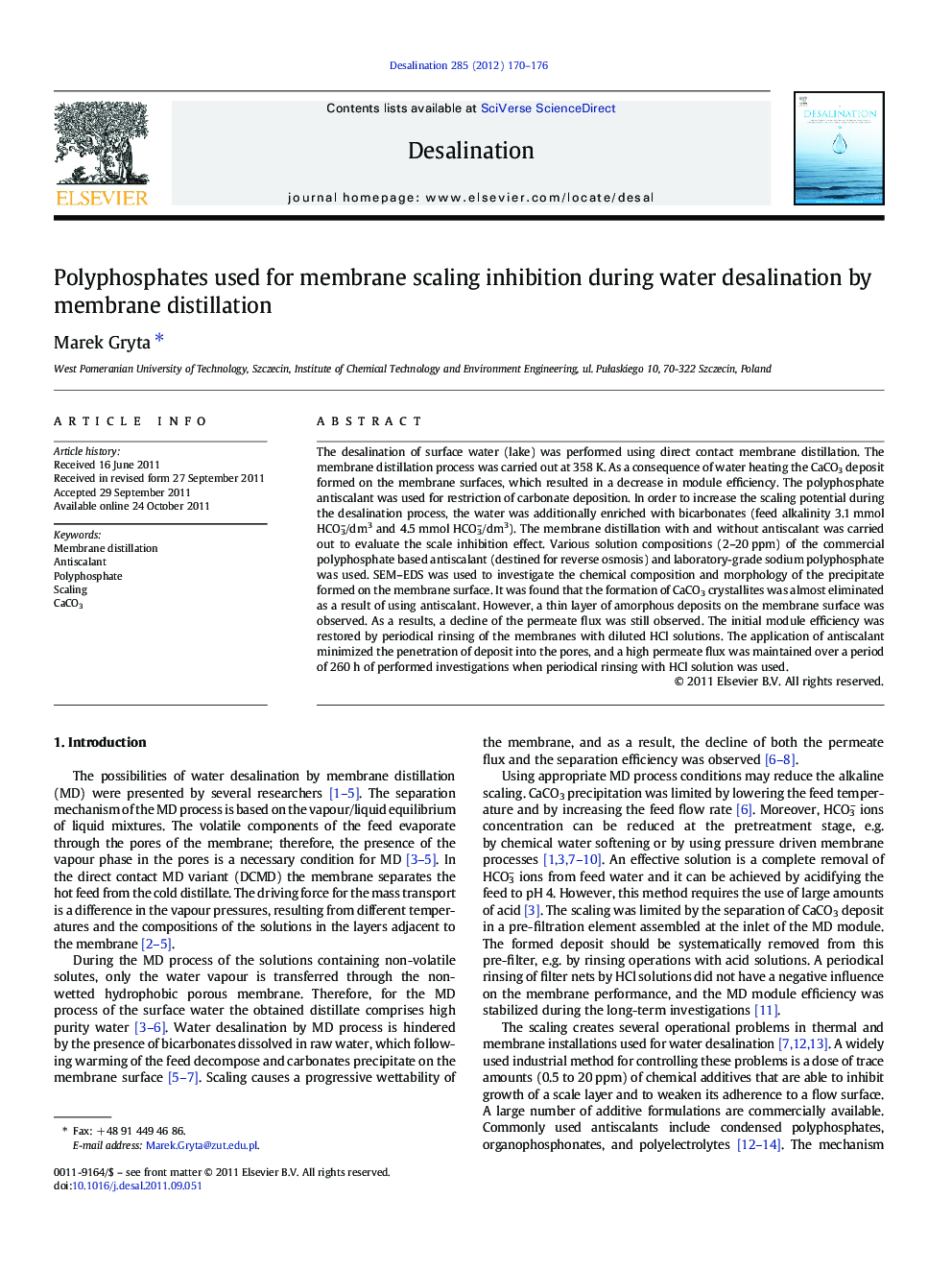| Article ID | Journal | Published Year | Pages | File Type |
|---|---|---|---|---|
| 624722 | Desalination | 2012 | 7 Pages |
The desalination of surface water (lake) was performed using direct contact membrane distillation. The membrane distillation process was carried out at 358 K. As a consequence of water heating the CaCO3 deposit formed on the membrane surfaces, which resulted in a decrease in module efficiency. The polyphosphate antiscalant was used for restriction of carbonate deposition. In order to increase the scaling potential during the desalination process, the water was additionally enriched with bicarbonates (feed alkalinity 3.1 mmol HCO3–/dm3 and 4.5 mmol HCO3–/dm3). The membrane distillation with and without antiscalant was carried out to evaluate the scale inhibition effect. Various solution compositions (2–20 ppm) of the commercial polyphosphate based antiscalant (destined for reverse osmosis) and laboratory-grade sodium polyphosphate was used. SEM–EDS was used to investigate the chemical composition and morphology of the precipitate formed on the membrane surface. It was found that the formation of CaCO3 crystallites was almost eliminated as a result of using antiscalant. However, a thin layer of amorphous deposits on the membrane surface was observed. As a results, a decline of the permeate flux was still observed. The initial module efficiency was restored by periodical rinsing of the membranes with diluted HCl solutions. The application of antiscalant minimized the penetration of deposit into the pores, and a high permeate flux was maintained over a period of 260 h of performed investigations when periodical rinsing with HCl solution was used.
► Membrane scaling caused by water desalination during membrane distillation was presented. ► The polyphosphate antiscalant was used in order to reduce carbonate deposit. ► SEM-EDS and XRD were used to study the chemical composition and morphology of the precipitate formed on the membrane surface. ► The application of antiscalant and module periodical rinsing with HCl maintained the high permeate flux.
